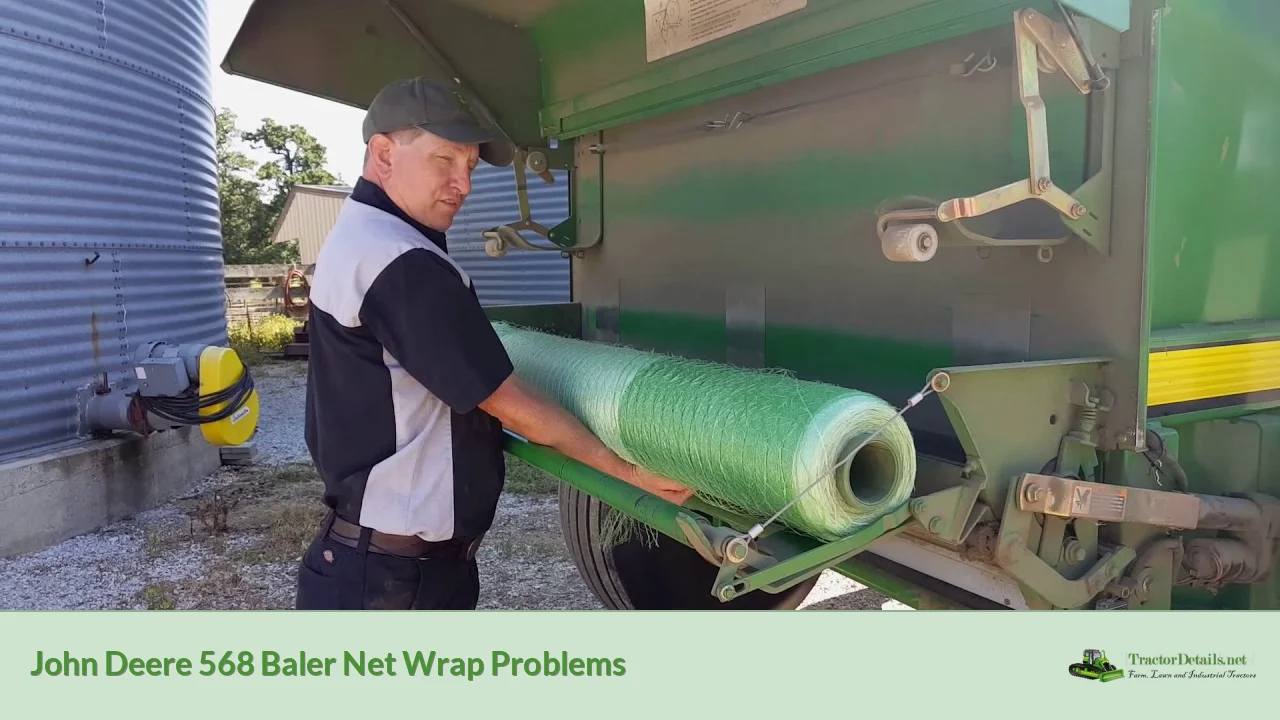John Deere 568 balers are widely used for their reliability and efficiency in handling hay and straw production. However, users often face issues with net wrap problems, which can lead to inefficiencies and increased downtime. Understanding the common issues, their symptoms, and effective troubleshooting steps is crucial for maintaining optimal performance.
Key Takeaways
- Net wrap problems in John Deere 568 balers can lead to significant operational disruptions.
- Common symptoms include uneven wrapping, net wrap breakage, or wrapping failure altogether.
- Possible causes range from mechanical faults to incorrect settings.
- Diagnosing and troubleshooting these issues promptly can save time and repair costs.
| Symptoms | Possible Causes |
|---|---|
| Uneven wrapping | Incorrect tension settings |
| Net wrap breakage | Worn roller or parts |
| Wrapping failure | Misaligned net dispenser |
| Frequent error messages | Faulty sensors or connections |
Problem Description
Users of the John Deere 568 baler might encounter various net wrap issues that can affect the quality of their bales. These problems can range from improperly wrapped bales to total net wrap failure, leading to wasted time and resources. Understanding the mechanics behind these issues is essential for maintaining productivity in the field.
Importance of Net Wrap
Net wrap is critical in binding and securing the contents of the bale, ensuring it holds its shape during transport and storage. If the net wrap system malfunctions, it can significantly affect the quality and durability of the bales produced.
Common Symptoms
When facing net wrap problems with the John Deere 568 baler, operators may notice:
- Uneven wrapping: This can result in loose or tightly wrapped bales.
- Net wrap breakage: Occurring when the net wrap material fails during operation.
- Wrapping failure: Resulting in the complete inability to apply net wrap to bales.
- Error messages on the display: Indicating malfunctions in the net wrap mechanism or sensor issues.
Possible Causes
Several factors can contribute to net wrap issues in John Deere 568 balers:
- Incorrect settings: The tension and application settings for the net wrap may not be properly calibrated.
- Worn parts: Components such as rollers and guides can wear down over time, affecting net wrap application.
- Mechanical faults: Misalignment of the net feed mechanism and components can lead to wrapping issues.
- Faulty sensors: Sensors that monitor net wrap application may fail and provide incorrect feedback to the control system.
Diagnosis Steps
Diagnosing net wrap issues effectively can save time and effort during repairs. The following steps are recommended:
-
Inspect the net wrap setup:
- Ensure the net wrap is loaded correctly.
- Verify that the net wrap tension is within acceptable limits.
-
Check for mechanical obstructions:
- Look for debris or blockage in the net dispenser area.
- Inspect the rollers for wear or any signs of damage.
-
Evaluate settings in the monitor:
- Review the baler’s settings for net wrap tension and application.
- Reset to factory defaults if necessary.
-
Run a diagnostic test:
- Use the control panel to access diagnostic codes, if available.
- Review operational logs to identify potential failure points.
Troubleshooting and Repair Procedures
Once the diagnosis is complete and the problem identified, follow these troubleshooting and repair procedures:
Uneven Wrapping
- Check tension settings:
- Adjust the tension on the net wrap according to the manual specifications.
- Inspect roller condition:
- Replace worn or damaged rollers that could disrupt even application.
Net Wrap Breakage
- Examine the net wrap quality:
- Ensure the net wrap material isn’t expired or damaged.
- Assess the net dispenser:
- Realign and test the dispenser to guarantee proper feed.
Wrapping Failure
- Realign the net wrapping mechanism:
- Check and realign any misaligned components in the wrap system.
- Sensor inspection:
- Look for electrical connections or sensor failures; replace as necessary.
Estimated Repair Costs
Repair costs can vary significantly based on whether you opt for DIY fixes or hire a professional. Here’s a breakdown:
- DIY Repairs:
- Parts (rollers, sensors, etc.): $30 - $200
- Tools (if not on hand): $50 - $150
- Professional Repairs:
- Labor: $75 - $150 per hour
- Total costs (including labor and parts): $300 - $1000
Prevention Tips
To minimize net wrap issues with your John Deere 568 baler, consider the following preventative measures:
- Regular maintenance:
- Perform routine checks of mechanical components and settings.
- Use quality net wrap:
- Always use OEM or quality replacement net wrap to ensure optimum performance.
- Operational training:
- Ensure all operators are trained on proper baler operation and troubleshooting techniques.
When to Seek Professional Help
If the baler's issues persist after troubleshooting or if you encounter:
- Electrical oder control software problems that you cannot resolve.
- Severe mechanical issues where safety might be a concern.
- Complex error codes that require advanced diagnostic tools.
It is advisable to consult a John Deere service technician or a qualified agricultural equipment repair service. They possess the expertise and equipment necessary to diagnose and fix more complicated issues.
Conclusion
Net wrap problems in John Deere 568 balers can significantly hinder operational efficiency. Understanding symptoms, possible causes, and troubleshooting steps can help mitigate these issues. Always maintain the baler properly and respond quickly to signs of trouble. Regular inspections, quality materials, and adequate training can significantly reduce the occurrence of net wrap problems. For persistent issues, don’t hesitate to seek professional assistance to ensure your equipment operates at peak performance.
By taking these proactive steps, John Deere 568 baler owners can preserve the longevity of their equipment, improve productivity, and ensure high-quality bales.It looks like your message was cut off. Please provide more details about what you'd like to continue discussing or any specific topic you're interested in. I'm here to help!
